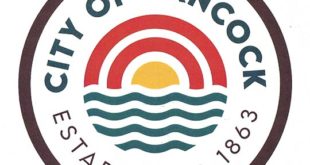The following press release was issued by the Western UP Health Department:
HANCOCK: The hot, lazy days of summer are perfect for a visit to one of the Western U.P.’s public bathing beaches. Health Department staff also enjoy visiting the beach – for recreation and to monitor water quality for contaminates that can cause illness.
Western U.P. District Health Department currently tests water quality weekly at twenty-one (21) public bathing beaches across Gogebic, Ontonagon, Baraga, Houghton, and Keweenaw counties. The Natural Resource Department of the Keweenaw Bay Indian Community tests water quality weekly at seven (7) additional locations in Baraga County. Water quality parameters such as turbidity, temperature, and possible contamination sources are investigated at each beach. The water is then tested for the indicator organism E. coli.
According to Stephanie Cree, KBIC’s Water Resource Specialist, “This is KBIC’s second year sampling at our local beaches, we are excited to continue providing this service to the community.”
According to the United States Environmental Protection Agency (EPA), the presence of E. coli bacteria in large numbers indicates that fecal contamination has occurred and harmful pathogens may be present in the water. Any beach with an unacceptable E. coli level would be closed to swimming by the Health Department or KBIC in order to protect public health until the contamination has cleared and the beach tests safe.
According to Tanya Rule, the Health Department’s Environmental Health Director, “higher than normal E. coli numbers can be expected after heavy rainstorms, especially if large numbers of geese and gulls frequent a beach. Rainstorms wash bird droppings from the beach into the lake water, increasing the amount of E.coli in the water.” Symptoms of exposure to E. coli include gastrointestinal problems such as nausea and diarrhea.
Water bodies with large numbers of ducks, geese, and snails also provide habitat for the flatworms that cause swimmer’s itch. August is typically the month the Health Department begins receiving complaints about swimmer’s itch. “When we receive a complaint from beach users who have swimmer’s itch, Health Department staff post warning signs at the beach and notify the beach owner,” Rule said. “So reporting swimmer’s itch to the health department is important.”
Swimmer’s itch, also known medically as cercarial dermatitis, is caused when tiny larval flatworms enter a bather’s skin while the person is swimming. The flatworm is unable to enter human blood vessels, and therefore, dies in the skin. Some people can have an allergic reaction to the parasite and suffer itchy, redden, raised areas on their skin with symptoms lasting for about a week. The condition is self-limiting because the immune system takes care of the intruders and the itchy rash simply disappears after that. However, at the peak of symptoms, corticosteroid cream and an oral antihistamine drug may be needed to control the itch. Towel drying immediately after leaving the water can help prevent swimmer’s itch.
The usual hosts for the flatworms that cause swimmer’s itch are ducks, geese, and snails. The flatworms also have a free-swimming stage in fresh water lakes. During July and August, swimmers can be exposed to large numbers of these flatworms along shorelines. Swimming in areas with large water fowl populations and snails should be avoided. Additional information about swimmer’s itch can be found on the Health Department’s website www.wuphd.org.
Weekly beach inspections and water quality monitoring is being conducted by the Health Department and Keweenaw Bay Indian Community Natural Resource Department at the following Western U.P. public beaches and the test results may be viewed on the MDEQ’s beach website www.deq.state.mi.us/beach/.
Baraga County:
- L’Anse Waterfront Park
- First Sand’s Beach
- Zeba Boat Launch
- The Alligator
- Head of the Bay
- Ojibwa Campground Beach
- Sandpoint Beach North
- Sandpoint Beach South
Gogebic County:
- Gogebic County Beach on Lake Gogebic
- Lake Gogebic State Park
- Sunday Lake Campground and Beach
Houghton County:
- Agate Beach
- Chassell Beach
- Dollar Bay Beach
- Hancock City Park Beach
- Houghton City Beach
- Calumet Waterworks Beach
- McLain State Park
- Twin Lakes State Park
Keweenaw County:
- Eagle Harbor Beach
- Eagle River Beach
- Lake Fanny Hooe Campground
- Lighthouse Overlook
Ontonagon County:
- Bergland Township Beach on Lake Gogebic
- Ontonagon Township Park
- Ontonagon County Park on Lake Gogebic
- Porcupine Mountain State Park
- Bond Falls Beach
All beach test results along with the status of each beach are available online on the Michigan Department of Environment, Great Lakes, and Energy website at www.deq.state.mi.us/beach/ or you can link through the health department’s website at www.wupdhd.org/beach-monitoring/. You can also search online for “Michigan Beachguard”.
Western U.P. District Health Department provides public health and environmental health services to residents in Houghton, Keweenaw, Baraga, Ontonagon, and Gogebic counties.
 Keweenaw Report Your Source for Local News and Sports
Keweenaw Report Your Source for Local News and Sports





